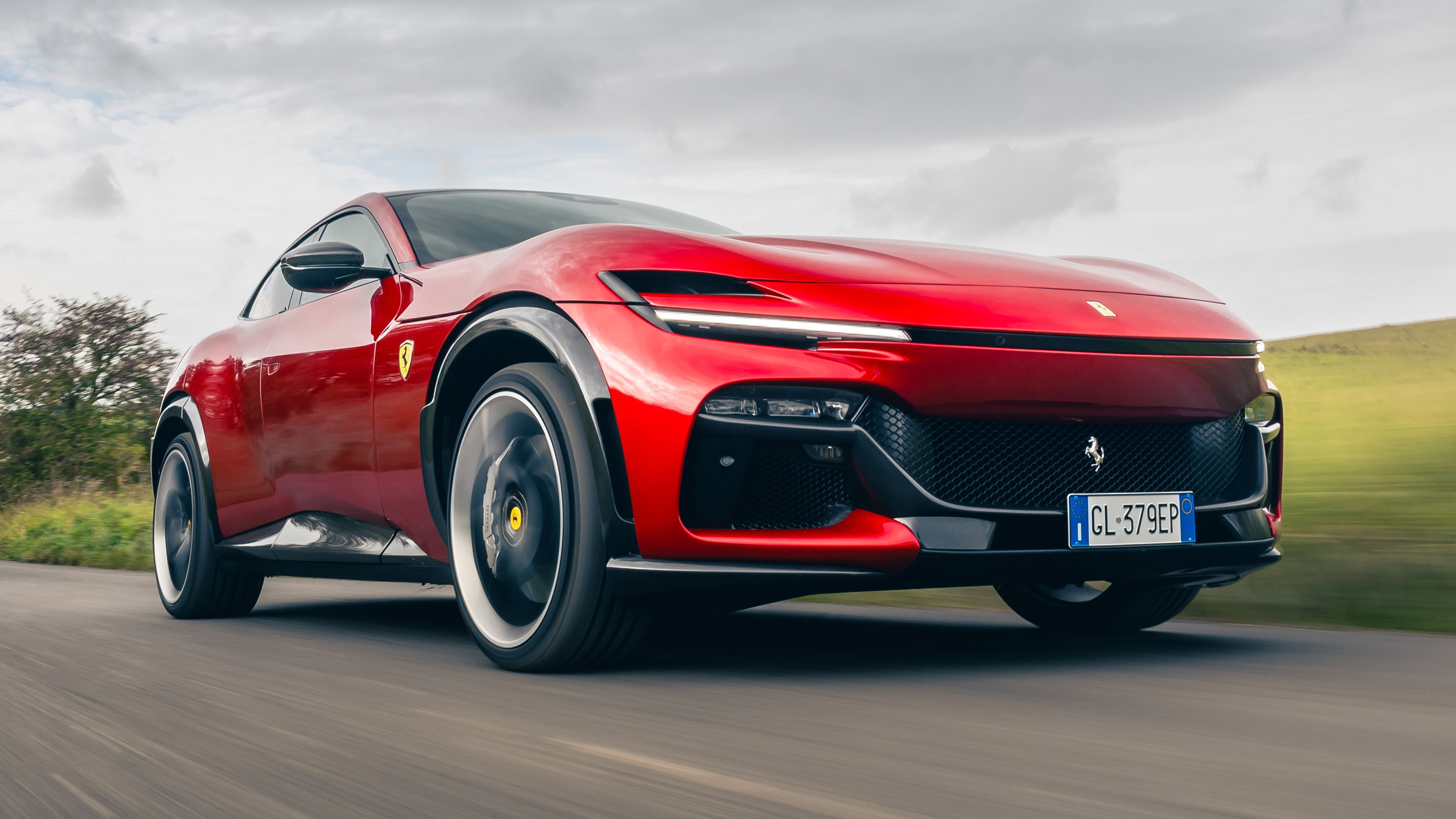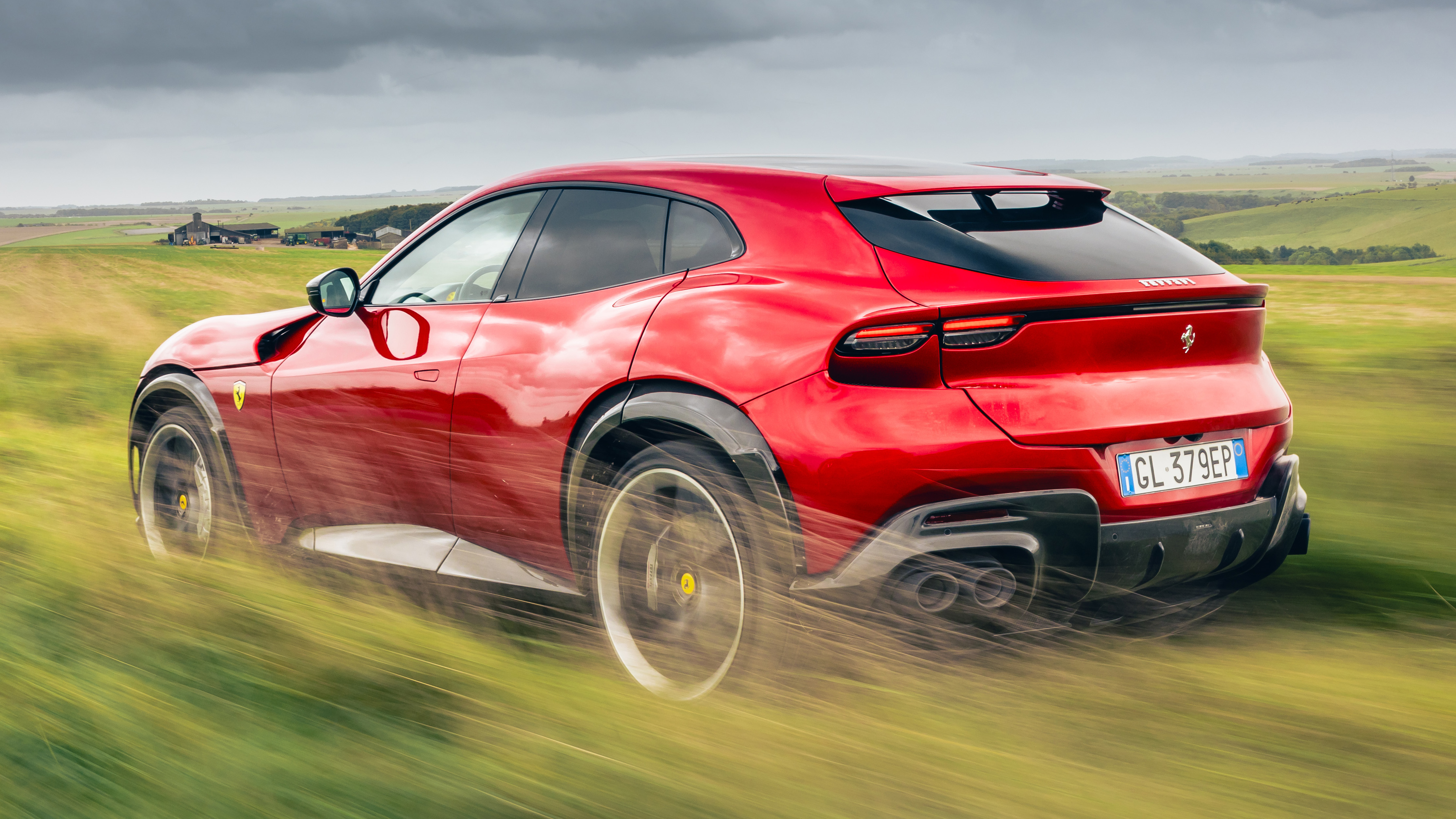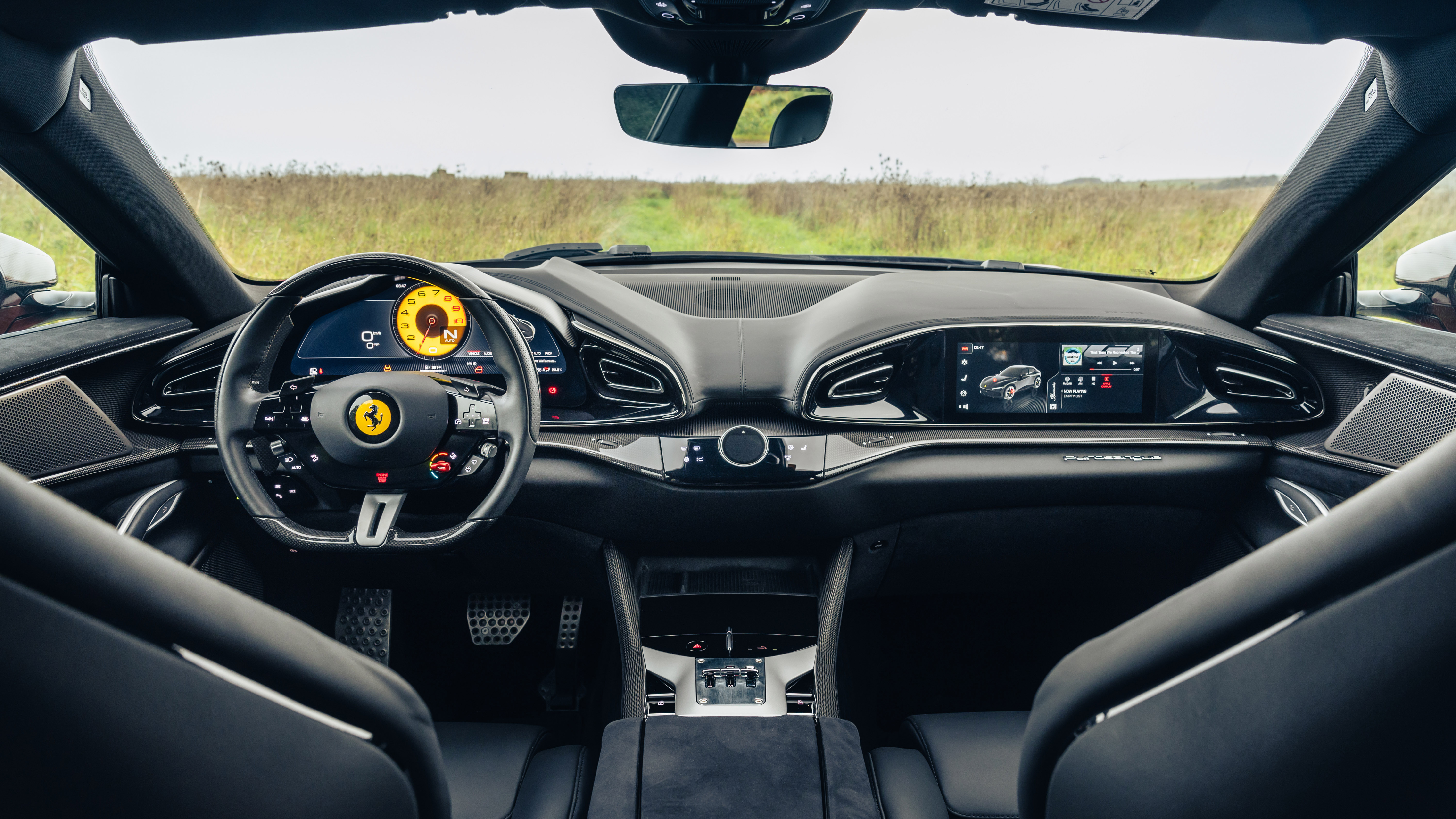
Ferrari Purosangue review
Driving
What is it like to drive?
If you want to get really geeky about suspension, then the Purosangue is the car to get involved with, mainly thanks to a system that involves some lovely spool valves. Now without getting too technical and making your head explode, the suspension on the Purosangue uses what’s called a TrueActive spool valve (TASV) from Multimatic. Basically that’s an active – almost proactive – suspension system that uses two independent spool valves, one for compression, one for rebound, on each wheel.
Each damper assembly comes with its own control module dictated to by the Purosangue’s vehicle dynamics brain, so they work completely independently of each other. Plus there’s a 48-volt electrical system to help support the springs. Now that electric motor (one for each wheel don’t forget) delivers force into the damper shaft via a tiny gearbox assembly. Yep, that’s right, each wheel technically has its own gearbox.
But the best bit? It minimises weight, packaging space and rotational inertia while supplying the kind of suspension that can react faster and have a much broader range of abilities. So much so that you don’t actually need anti-roll bars anymore.
Erm. Ok. So what does that mean?
Body control, ride comfort, no need to change the ride height: it’s bleeding-edge stuff previously only seen in a different format on racing cars. In fact, the only road cars we’ve ever driven with spool valves are the Ford GT and Aston Martin One-77, and they weren’t as advanced as this.
The big question is, do they work?
Short answer, yes. And spectacularly. The longer answer involves a little bit of explanation. The steering is an interesting one: because good steering is a relationship between the wheel itself, and what happens with the car immediately afterwards; it can be undone in short order by poor body and damper control. Ferrari sportscars, more than pretty much anything else bar some Lotuses and racing cars, operate from the wrist. They require a mere flick to interpret intention, and have a habit of sticking to pretty much any line you like, no matter how aggressive you are. Direct sums it up in one word. Darty, if you haven’t driven one before.
The Purosangue, while exceptional, requires your forearms. There’s just more mass to move, a more positive declaration necessary from the wheel. You have to place the Purosangue, where you’d almost think a 296 GTB into position. This is not, however, a criticism. If the Purosangue was too light, too ridiculous in its immediacy, it would feel fake, and probably give you a slight feeling of motion sickness. Your inner ear often knows when electronics are feeding you false information.
So it's the perfect answer?
Not completely, no – but it has a bloomin’ good go at it. The Purosangue can nibble at the edges of a bad road at low speeds and bloodhound a severe camber, but with 23-inch rear tyres the width of a barrel (they’re 315/30s, the fronts are 255/35 R22s), that’s almost to be expected.
In fact, cruising along, the Purosangue feels benign, quiet, comfortable… easy. Because the steering is not as hyperactive as other Ferraris the Purosangue feels remarkably settled over long distances. Over a 400-mile steady-state cruise, there was no constant fidgeting to place the big Ferrari on the road. Even in ‘Sport’ mode it rides with accuracy. In fact the most pressing issue you’ll likely encounter on a big road trip is avoiding other road users desperate to film your every steering input. Gets a lot of attention, this thing.
So on the whole it’s a big GT companion that can hold its own with whatever you care to mention. Rear vision isn’t the best, and the V12 whirrs away without the low-rev bass you get from a V8, but that’s why God invented rear-view cameras and exhaust valves. Meanwhile it’s quiet inside, and the suspension packs immense cushioning into its limited travel.
So what's it good at?
Basically, where other SUVs run out of ideas, the Purosangue raises its game. The slightly staccato nature of the experience further up the V12’s rev range exposes new depths of ability. The Purosangue becomes a giant rally car that relishes the abuse, and steps up when things get exciting. And they do, because this is still a higher-riding car with well over 700bhp.
Not that you’d notice. It’s got feel, and precision, and an almost otherworldly sense of connection. It breathes its way down the road, rather than fights against it. One of the reasons for all the extra feel is that the all-wheel drive system appears to be extremely rearward-biased. On a dry road and under heavy load – say, accelerating out of a hairpin – the rear tyres will spin merrily before the front end is tugged back into line.
Similarly, this isn’t an off-roader: think of it as a rear-wheel drive car with a front-axle helper rather than something that can lock a diff. It would be a lightly spectacular (and expensive) desert racer. Albeit one with rear-wheel steer for posh hotel underground car bunkers. It’s also the first SUV we can recall that has nose lift on the options list. £4,109 if you were wondering.
And if you use that V12 to the fullest? It's not going to be cheap to fill up, is it?
Honestly, this is one of those situations where if you’re worried about the fuel economy figure of your V12 Ferrari, then you’re probably playing the wrong game. After one long day, the Purosangue swallowed 175 euros of Super Unleaded, and the 100-litre tank wasn’t completely empty. That’s one of the biggest tanks on the market, but you’ll still be on the hunt for fuel after about 280 miles.
Featured

Trending this week
- Car Review
BMW iX3






